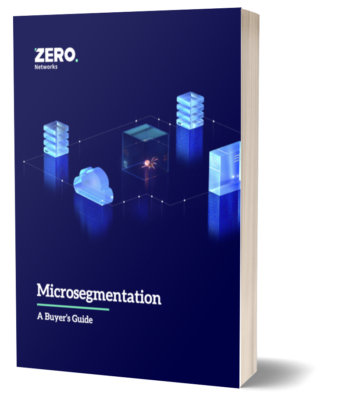To Sum It Up:
- Today’s networks are very complex, with many different users and machines going in and out of multiple sites, on-premises and in the cloud.
- It is impractical for IT to manually define and constantly update policies that effectively restrict network access to what is needed at any given moment.
- Once inside the network, users are typically free to roam and access a big part of the network - this allows attackers to do whatever they want once inside your network.
- Zero Networks automates the creation and enforcement of a zero trust network model for your entire network, ensuring all users and machines can only access what they should.
Digging a Little Deeper
“You have to use zero trust to keep your network safe.”
That’s a common notion within the cybersecurity industry today. And it’s true: a fully-implemented zero trust network model across all your assets is a great way to secure your network and making sure malicious entities won’t be able to cause damage to your business.
A zero trust network model is a security concept centered on the belief that organizations should not automatically trust anything inside or outside their perimeters and instead must verify anything and everything trying to connect to their assets before granting network access.
Manual Doesn’t Scale
Considering the complexity and dynamic nature of today’s networks, with an ever-changing array of users and machines accessing different resources in various locations worldwide, both on-premises and in the cloud, it is extremely difficult to keep track of it all. Organizations rarely have the time, manpower or resources to deploy and manually orchestrate who can connect to which resources, at any given moment, across the entire network. It is practically impossible to keep router ACLs, firewall rules and other advanced segmentation solutions up-to-date. A reliance on manual intervention isn’t practical for making the constant adjustments necessary to ensure everyone can go about their business without issues.
For Example
Let’s look at an example. Say there’s an organization with 10 sites, 25,000 clients and 2,000 servers, and they want to achieve a zero trust stance. What do they do? Do they start by restricting all client-to-client access between the 25,000 machines? What if there are departments or teams (e.g. engineering) that need direct access? Is an exception made for them? What if 1,000 machines need that client-to-client access? Is a new policy created for them? How are those exceptions implemented across all 10 sites? That’s a lot to implement and manually manage.
How do they make sure that only the right machines access specific servers? Do they install agents? Manually configure rules? Implement reverse proxies for specific servers and protocols? There is no easy way to do it. The management is so cumbersome - network privileges are constantly being added, but rarely removed, which enables excessive access.
Of course, there needs to be a dedicated team responsible for managing it all. This team needs to adjust servers, clients, machines and even routers, creating hundreds of thousands of rules in various different systems and solutions, all of which need to be maintained. Can any team do it manually, for their entire network, with ease? Not likely.
The Zero Networks Solution - Enabling Autonomous Network Access Security at Scale
We want to ensure a zero trust network model was achievable, by making it easy and scalable for enterprises to make certain that all users and machines are only allowed to access the resources they require to do their job. The Zero Networks Access Orchestrator integrates with your existing IT, networking and cybersecurity infrastructure to observe and create an accurate map of all the communications within your network.
After enough data has been gathered, Zero Networks automatically creates user- and machine- level perimeter policies, also known as "microsegmentation", which use your existing infrastructure to confine network access to only what each user needs and nothing more. Each user can still gain additional access to resources they rarely use or find they now need to access, via a simple, patent-pending two-factor authentication process. Once confirmed to be legitimate, these additional access requirements will be automatically incorporated into the policies for that user or machine to ensure they can securely go about their business.
There are no agents and no policies for IT to deploy and continuously manage - Zero Networks does it all for you. Prior to deployment, Zero Networks presents live simulations that give you an accurate readout of the effect the new zero trust network model will have on each user and machine in your network, so you can be sure business will go on, with no disruptions.
Malicious entities, on the other hand, will be prevented from moving freely inside the network. Zero Networks shuts down many of the internal attack vectors that plague organizations, such as network discovery, lateral movement, remote execution, commodity malware propagation, and ransomware propagation. Even if an attacker obtains credentials from the most privileged accounts, such as those of an administrator, they will be contained to only a limited set of resources. Finally, with Zero Networks, you have a way to quickly and efficiently establish and maintain a zero trust network model at scale.



